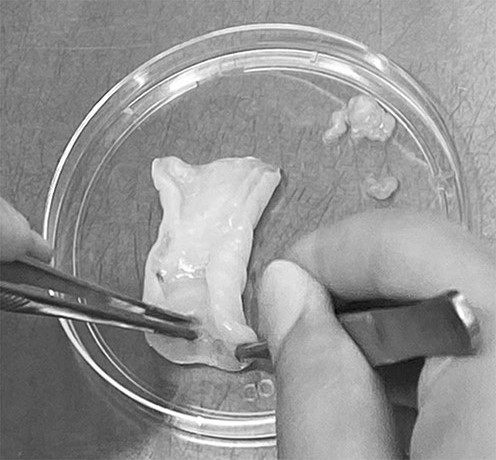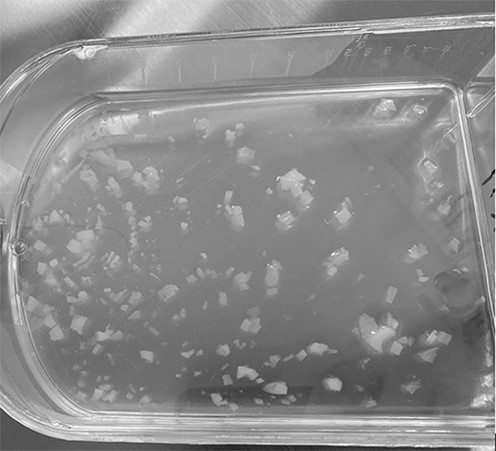Method and system for separating, culturing and amplifying human umbilical cord mesenchymal stem cells
A quality stem cell, separation and culture technology, applied in the field of stem cells, can solve the problems of cell adherence effect, poor morphology, long processing time, affecting separation and extraction efficiency, etc.
- Summary
- Abstract
- Description
- Claims
- Application Information
AI Technical Summary
Problems solved by technology
Method used
Image
Examples
Embodiment Construction
[0032] The method for separating, culturing and expanding umbilical cord mesenchymal stem cells proposed by the present invention specifically includes the following steps:
[0033] Step 1, sample pretreatment: take out the aseptically obtained umbilical cord in the ultra-clean bench, clean up the attached blood and debris, transfer it to 75% alcohol for immersion and disinfection for 1 min, and wash the sterilized umbilical cord with cleaning solution 3 times, Then use tissue forceps and scissors to cut along the inner sides of the ligature ends on both sides of the umbilical cord, and discard the edema or coagulation parts. In a new petri dish with cleaning solution, the picture of the umbilical cord after pretreatment is as follows figure 1 shown.
[0034] Preferably, the cleaning solution is a physiological saline solution containing penicillin, streptomycin and amphotericin.
[0035] Step 2, the acquisition of Wharton's jelly: as figure 2 As shown, the amniotic membra...
PUM
 Login to View More
Login to View More Abstract
Description
Claims
Application Information
 Login to View More
Login to View More - R&D
- Intellectual Property
- Life Sciences
- Materials
- Tech Scout
- Unparalleled Data Quality
- Higher Quality Content
- 60% Fewer Hallucinations
Browse by: Latest US Patents, China's latest patents, Technical Efficacy Thesaurus, Application Domain, Technology Topic, Popular Technical Reports.
© 2025 PatSnap. All rights reserved.Legal|Privacy policy|Modern Slavery Act Transparency Statement|Sitemap|About US| Contact US: help@patsnap.com



